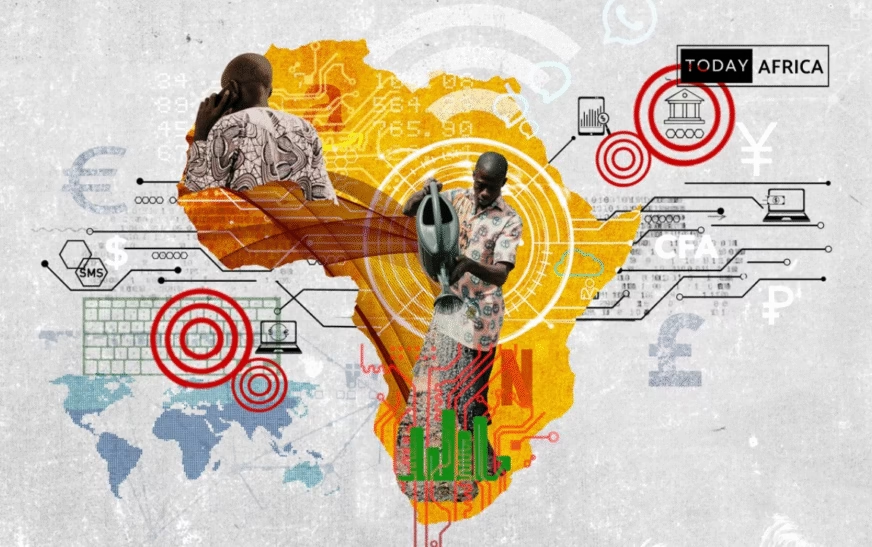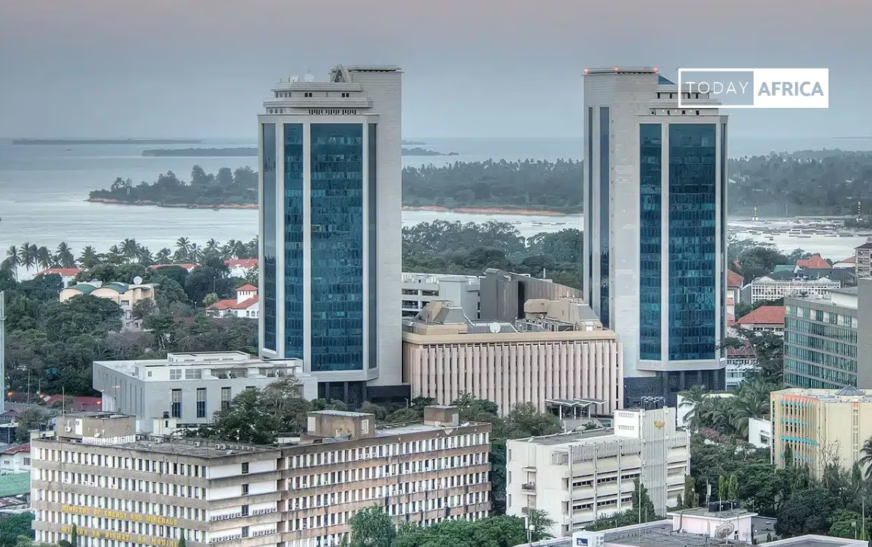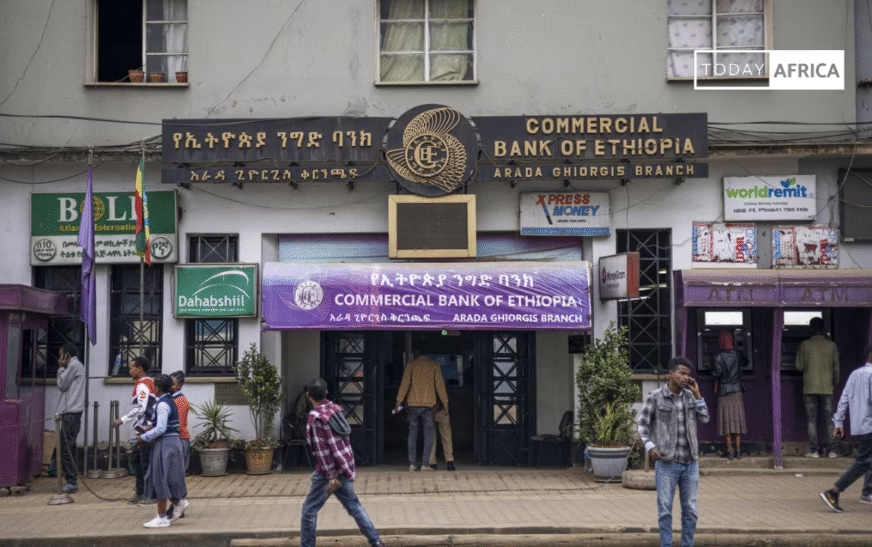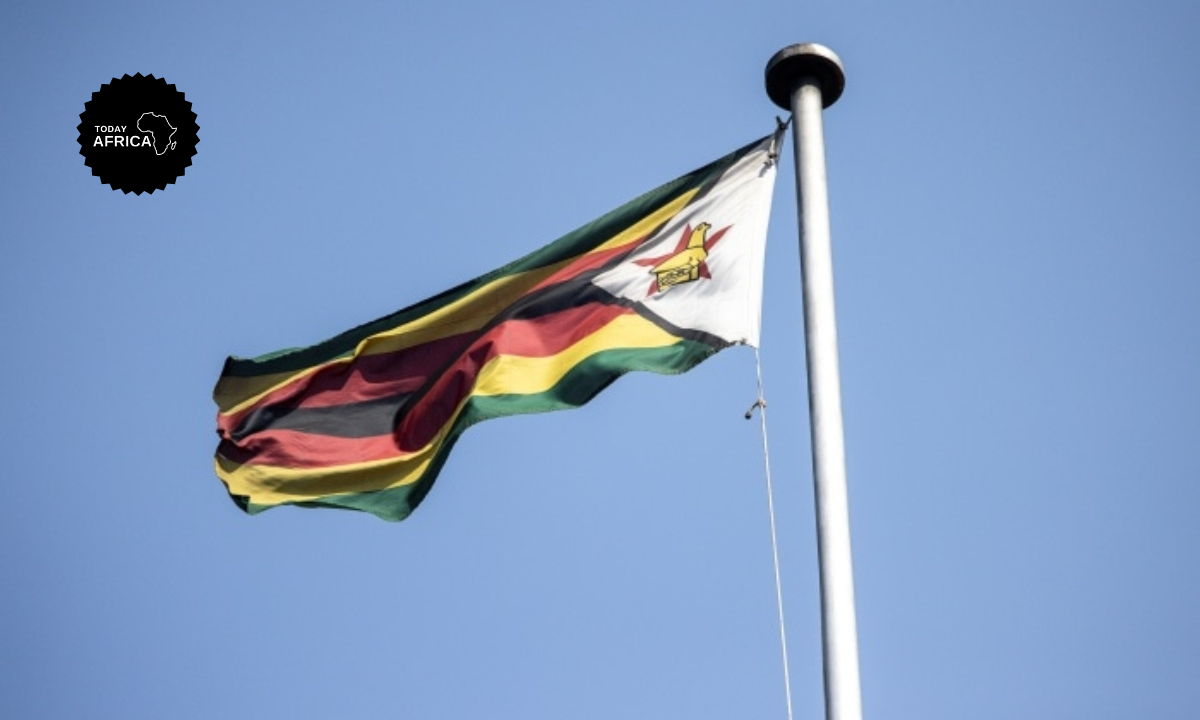In 2025, fintech in Africa is no longer an emerging story; it’s a continental force.
In the first half of the year alone, startups raised $1.42 billion, nearly half of all African tech funding, as investors bet big on the sector’s ability to bank the unbanked and fuel economic growth.
Mobile‑money networks are moving beyond basic transfers into savings, insurance, and credit.
Virtual assets and blockchain are stepping into the mainstream, powering faster remittances and cross‑border trade. Meanwhile, rising investment in cybersecurity is strengthening trust, and the surge of venture‑debt financing is giving startups new, non‑dilutive capital to scale.
Together, these shifts are setting the stage for the next chapter in Africa’s digital‑finance revolution. One that promises to deepen financial inclusion and deliver a lasting economic impact across the continent.
The Rise of Fintech in Africa
The story of fintech’s ascent in Africa begins with a convergence of unmet needs and mobile-first innovation. Traditional banking infrastructure, branch networks, ATMs, and point-of-sale terminals have historically been sparse outside major urban centers.
In contrast, mobile-phone penetration has surged: by the end of 2024, over 770 million Africans subscribed to mobile services, with feature phones still dominating in rural areas.
Entrepreneurs and telcos seized this gap, creating lightweight digital-payments platforms that require nothing more than a SIM card and USSD code.
As a result, whole populations that once had no access to formal banking suddenly found themselves able to send, receive, and store money on their handsets.
Digital payments revolution
The term “mobile money” became synonymous with financial inclusion after Kenya’s Safaricom launched M-Pesa in 2007.
Within a decade, M-Pesa had onboarded more than 50 million users across East Africa by partnering with local agents, small shops and kiosks that facilitate cash-in and cash-out transactions.
This agent network model proved so effective that it was rapidly replicated in Ghana, Tanzania, and beyond.
According to TechCabal, in the first half of 2025, fintech startups accounted for 45% of all African tech funding, about $640 million, far outpacing investments in sectors like healthcare and energy.
Further Africa reports that challenger platforms such as Chipper Cash, OPay, and FairMoney have taken the baton from M-Pesa by integrating peer-to-peer transfers with value-added services, everything from merchant payments and airtime top-ups to small-ticket lending, within a single app (Further Africa).
Their success underscores how digital payments have leapfrogged legacy banking systems and laid the foundation for a broader fintech ecosystem.
Increasing financial inclusion
Despite the gains of mobile money, an estimated 57% of sub-Saharan African adults remained unbanked as of mid-2024. That translates to nearly 350 million people lacking any formal savings or credit products.
Fintech firms have bridged that divide by designing services for the masses: USSD-based wallets that work on basic feature phones, Android apps optimized for low-cost smartphones, and partnerships with local merchants to serve as cash points.
By slashing remittance fees, Africa averages over 8% per $200 transfer, startups like Nala and Mama Money are passing savings directly to customers, charging as little as 3% on select corridors (El País).
This cost reduction not only increases disposable income for low-income households but also builds trust in digital channels, encouraging users to explore savings, micro-insurance, and credit products down the line.
See Also: 5 African Countries Leading the Tech Boom in 2025
Startup ecosystem and venture investment
Investor interest has mirrored the sector’s progress. In H1 2025, African tech startups raised $1.42 billion across 243 deals, marking a 78% year-on-year increase, almost half of that funding went to fintech companies.
Nigeria and South Africa lead in deal volume and ticket size, buoyed by large domestic markets and established tech ecosystems.
But emerging hubs like Egypt, Ghana, and Rwanda are quickly catching up, thanks to government incentives, improving regulatory frameworks, and growing pools of technical talent.
Flagship funding rounds, Flutterwave’s $250 million Series D, Moniepoint’s $75 million raise, and Wave Money’s $50 million infusion, signal not only the scale of ambition but also global capital’s confidence in African fintech innovation.
These investments are channeling into product development, regional expansion, and the agent networks that remain crucial for cash-based economies.

Trends to Watch in 2025 & Beyond
As fintech in Africa moves beyond its breakout phase, several key dynamics will shape the next chapter.
Rapid expansion of mobile money
Africa’s mobile-money networks will deepen both in services and geography. In markets like Kenya, digital payments grew beyond simple P2P transfers to support savings, insurance and credit products directly within mobile-money wallets.
Kenya’s digital-payments market alone is forecast to grow at a 14.1% CAGR from 2024 to 2028, reaching US $14.54 billion by 2028, driven by new partnerships between telcos, banks and fintechs that bundle value-added services into a single user interface.
Meanwhile, a Mastercard-commissioned report projects Africa’s overall digital-payments economy will hit US $1.5 trillion by 2030, underscoring massive growth potential beyond leading markets like Kenya.
Growing influence of virtual assets
Cryptocurrencies and blockchain-based solutions aren’t just fringe experiments; they’re increasingly central to remittances, cross-border trade, and even payroll.
Regulators are responding: Kenya’s Virtual Asset Service Providers Bill 2025 explicitly brings stablecoin issuance, tokenisation platforms, and transfer services under license regimes, with a one-year compliance window for providers.
Startups such as Yellow Card, Bundle Africa and Bitmama are building crypto on- and off-ramps that deliver faster, lower-cost transfers, while embedding KYC and AML controls to satisfy regulators.
Heightened focus on cybersecurity
As African fintech platforms digitise more of users’ financial lives, they become targets for fraudsters and hackers. Expect to see accelerated investment in end-to-end encryption, behavior-based fraud detection, and biometric identity verification.
Regional bodies like the African Union’s Cybersecurity Convention will promote information-sharing hubs to alert member states to emerging threats, and partnerships will form between banks, telcos and specialist security firms to harden networks and transaction protocols.
Surge in venture debt and alternative financing
While equity rounds have dominated headlines, venture debt is becoming a mainstream growth engine.
In H1 2025, Africa’s venture debt market more than doubled its value compared to H1 2024, the first time debt financing outpaced equity within a quarter, highlighting non-dilutive capital’s appeal for scaling fintechs with predictable revenues.
This trend will unlock new funding pathways for infrastructure-heavy paytechs and back-end service providers that prefer to preserve equity for strategic investors.
Read Also: What Investors Look for in African Startups
Challenges and Opportunities
Even as opportunities abound, fintech players must navigate significant hurdles.
Regulations
Regulatory regimes across Africa remain fragmented. While frameworks like the AfCFTA’s digital-payments protocol promise pan-African interoperability, most countries maintain distinct licensing rules, capital requirements and data-privacy laws.
Policymakers can accelerate growth by expanding sandbox initiatives, harmonising e-KYC standards, and adopting risk-based approaches that protect consumers without stifling innovation.
Infrastructure gaps
Reliable internet connectivity and power supply are prerequisites for 24/7 digital-financial services but many rural and peri-urban areas still face outages or poor network coverage.
Investments in last-mile fiber, off-grid power solutions and edge-computing hubs will be critical.
Visa’s new Johannesburg data centre, a R1 billion (US $57 million) build, demonstrates how localized processing capacity can reduce latency, enhance resilience, and lower dependency on overseas infrastructure, benefiting both local fintechs and global networks.
Talent shortages and skills development
A shortage of software engineers, data scientists and cybersecurity specialists threatens to bottleneck growth.
Universities and bootcamps must align curricula to fintech needs, covering blockchain development, AI-driven credit scoring and UX design for low-literacy users, and industry partnerships should offer internships, hackathons and certification programs to build capacity.
Cross-border payments and currency volatility
Currency fluctuations and FX controls add complexity and cost to cross-border transactions.
Fintechs that integrate hedging tools, stablecoin corridors or multi-currency wallets can offer more predictable pricing.
Collaborations with local forex bureaus and remittance networks will smooth settlement flows, helping SMEs and gig-economy workers transact reliably across borders.
Roadmap for Key Players
Entrepreneurs
Entrepreneurs should begin by conducting granular market research to uncover micro-segments that remain underserved.
For example, agri-lending platforms can partner with cooperatives to offer seasonal loans keyed to harvest cycles, while women-focused financial health apps might bundle savings circles with educational content on budgeting and rights.
When designing products, emphasize simplicity: USSD interfaces or low-data smartphone apps that work offline will reach users with limited connectivity.
To build trust rapidly, collaborate with local agents, shopkeepers, community leaders or trusted NGOs, who can onboard customers, collect feedback, and provide in-person support.
Finally, pilot small, iterate based on real-world usage, then scale regionally once unit economics are proven.
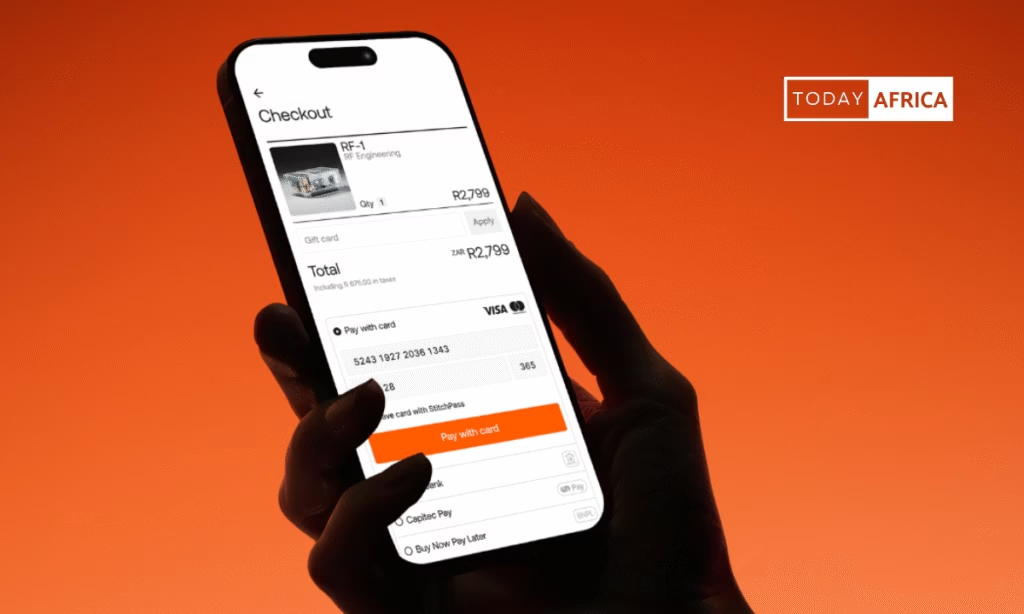
Investors
Investors should look beyond Nigeria, Kenya, and South Africa to emerging fintech hubs like Ghana, Senegal, and Rwanda. These secondary markets often feature lower valuations, ambitious founders, and untapped customer bases.
Within those markets, balance investments across subsectors: payments and remittances still dominate, but insurtech, regtech, and B2B infrastructure (API platforms, KYC services) are growing rapidly.
Pay close attention to startups using AI and alternative data, mobile usage patterns, and utility payments, to underwrite credit for thin-file consumers.
Finally, structure deals to include both equity and venture debt tranches, giving startups runway to scale without excessive dilution and positioning your portfolio for downstream liquidity events.
See Also: 8 African Startups that Raised Series A in H1 2025
Policymakers
Regulators and government agencies play a pivotal role by creating clear, predictable rules.
Establish dedicated fintech sandboxes that allow startups to test new models, like cross-border stablecoins or biometric ID–based onboarding, under regulatory supervision.
Complement that with phased licensing frameworks: simple e-money licenses for payment processors, more rigorous ones for lenders or custodial wallet providers.
Invest in foundational infrastructure: a robust national ID system with biometric authentication enables secure, paperless KYC, while expanded broadband and 4G/5G coverage ensures services reach remote areas.
Engage regularly with industry associations to gather feedback on proposed rules, ensuring regulations strike the right balance between consumer protection and innovation.
Development partners
International organizations, foundations and multilaterals should focus on capacity-building rather than one-off grants.
Host regional bootcamps that bring together fintech founders, engineers, regulators and investors to share best practices and troubleshoot common challenges.
Commission research on financial-inclusion metrics, digital credit penetration, savings rates among women, and rural remittance flows to identify gaps and track progress.
Provide technical assistance for cybersecurity frameworks, helping local firms adopt global standards like PCI DSS or ISO 27001.
And facilitate cross-border dialogues to harmonize regulations, so that a wallet licensed in one country can seamlessly serve customers in neighboring markets.
Conclusion
Fintech in Africa is more than a trend; it’s a transformative force reshaping economies, empowering individuals, and unlocking new avenues for growth.
As we move through 2025, the convergence of mobile innovation, strategic partnerships, and regulatory evolution will determine who thrives in this dynamic ecosystem.
Whether you’re an entrepreneur with a bold idea, an investor seeking the next unicorn, or a policymaker charting the future of digital finance, now is the time to act.
FAQ
What is driving the rapid growth of Fintech in Africa?
Key drivers include widespread mobile phone penetration, large unbanked populations, supportive fintech regulations (such as sandboxes), and significant VC and venture debt investment. In H1 2025, $1.42 billion was invested, with nearly 45% of all funding going to fintech startups.
Which African countries lead in fintech adoption?
Nigeria and Kenya are top hubs, thanks to high mobile money usage and startup ecosystems. South Africa, Egypt, Ghana, and Rwanda are also emerging as influential players with growing digital payment volumes.
How are fintech startups addressing financial inclusion?
By offering services tailored to underserved communities, including micro-loans, savings, and insurance, and leveraging USSD/mobile apps, fintechs reduce barriers to entry and lower transaction costs, therebyboosting inclusion for rural and low-income users.
What challenges do fintech companies face in Africa?
Major challenges include uneven digital infrastructure, regulatory fragmentation across jurisdictions, cybersecurity threats, and talent shortages. Infrastructure investments and harmonized policies are vital to overcome these hurdles.
What opportunities should investors watch in 2025?
High-growth areas include mobile money expansion, virtual asset platforms, cybersecurity services, and venture debt financing. Secondary markets in West and East Africa often provide attractive valuations and untapped potential.
Leave a comment and follow us on social media for more tips:
- Facebook: Today Africa
- Instagram: Today Africa
- Twitter: Today Africa
- LinkedIn: Today Africa
- YouTube: Today Africa Studio

